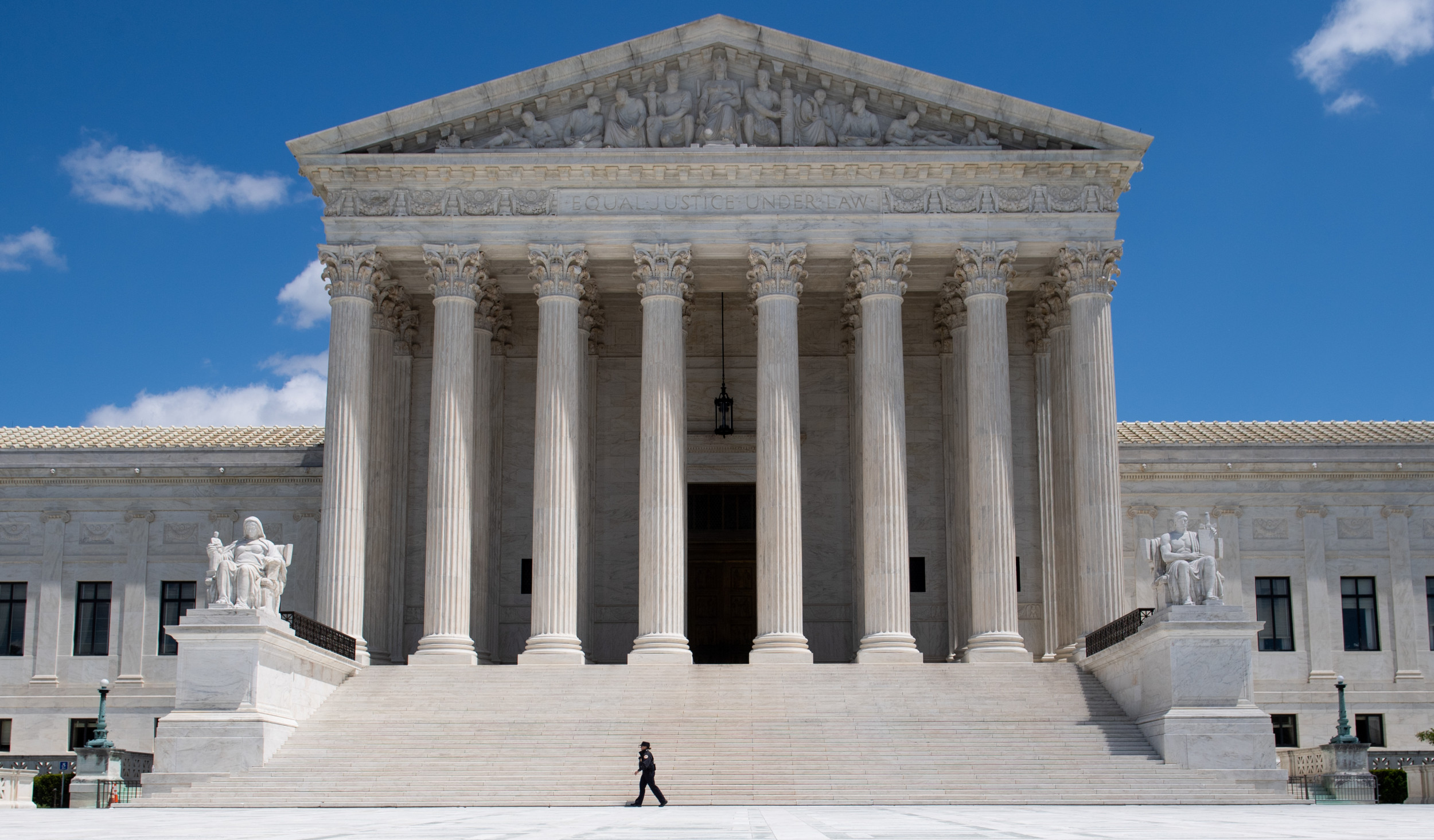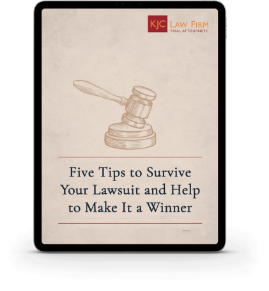As the national discussion about police reform and Black Lives Matter continues to rise in frequency and importance, it is important to consider one of the greatest hurdles to preventing police brutality: lack of police accountability. Qualified immunity is a doctrine created by activist judges that permits law enforcement and other government officials to violate people’s constitutional rights with impunity. Ordinary people—whether they’re doctors, lawyers, or construction workers—are expected to follow the law. If they violate someone else’s legal rights, they can be sued and required to pay for the injuries they’ve caused. Law enforcement and other government officials? Not so much. Why is this important? Because nearly all federal and state civil rights statutes empower ordinary citizens to sue law enforcement officers and other government officials for unlawful conduct. This is very much by design since we know from history that people, corporations, and government agencies change their behavior when they are concerned about liability. Civil rights statutes only protect people if they are enforced and until qualified immunity is revoked, the law is virtually unenforceable.
Under the doctrine of qualified immunity, public officials are shielded from accountability and liability for their unlawful conduct. They can be held accountable only insofar as they violate rights that are “clearly established” in light of existing case law. This standard shields law enforcement, in particular, from innumerable constitutional violations each year. In the Supreme Court’s own words, it protects “all but the plainly incompetent or those who knowingly violate the law.” In other words, ordinary citizens cannot even pursue a claim against law enforcement unless they can show the officer intentionally committed a crime. It is under this rule that officers can, without worry, drag a nonthreatening, seven months pregnant woman into the street and tase her three times for refusing to sign a piece of paper.
The creation of qualified immunity
In the Civil Rights Act of 1871 (also known as the Ku Klux Klan Act), Congress gave Americans the right to sue public officials who violate their legal rights. In Section 1983 of the U.S. Code (the modern analog of the 1871 Civil Rights Act), Congress said that if a public official violates your rights—whether via police brutality, an illegal search, or an unlawful arrest—you can file a lawsuit to hold that public official is financially accountable for his conduct. The language Congress used was unequivocal: “Every” state official who causes a “deprivation of any rights” guaranteed by the Constitution and laws “shall be liable to the party injured.” There is nothing in the law that grants police or any other government official any immunity whatsoever. The law was simple, straightforward, and easy to apply.
Initially, the U.S. Supreme Court recognized the straightforward application of this law. In the case Monroe v. Pape, for instance, a Black family, the Monroes, sued Chicago police officers who, in the early morning, broke into their home without a warrant, dragged them from their beds, forced them to stand naked in the living room, and then ransacked every room, emptying drawers and ripping mattress covers. The officers then arrested James Monroe, the father, and detained and interrogated him for hours. In an opinion written by Justice William Douglas, the Supreme Court recognized that the Civil Rights Act allowed the Monroes to sue the officers for violating their constitutional rights. The very purpose of the Civil Rights Act, the Court explained, was “to give a remedy to parties deprived of constitutional rights, privileges, and immunities by an official’s abuse of his position.”
Over recent years, however, the Supreme Court has made the law virtually impossible for private citizens to enforce, so much so that the law is now considered a “toothless tiger.” How? By creating out of whole cloth the legal defense of “qualified immunity”, and then vastly expanding it.
The Supreme Court invented qualified immunity in 1967, describing it as a modest exception for public officials who had acted in “good faith” and believed that their conduct was authorized by law. The case gives no rationale as to why the public officials “good” faith” could not be decided by a jury, as is the case in nearly every other type of lawsuit.
Fifteen years later, in Harlow v. Fitzgerald, the Court drastically expanded the defense. The protection afforded to public officials would no longer turn on whether the official acted in “good faith.” Instead, even officials who violate peoples’ rights maliciously will be immune unless the victim can show that his or her right was “clearly established.” Since the Harlow decision, the Court has made it exceedingly difficult for victims to satisfy this standard. To show that the law is “clearly established,” the Court has said, a victim must point to a previously decided case that involves the same “specific context” and “particular conduct.” Unless the victim can point to a judicial decision that happened to involve the same context and conduct, the officer will be shielded from liability.
The Supreme Court has recognized one exception to this rule, in Hope v. Pelzer. There, corrections officers disciplined a prisoner by handcuffing him to a hitching post for seven hours, with his hands above his shoulders, shirtless in the summer sun. At one point a guard taunted the prisoner by giving water to a guard dog in plain sight. Faced with these circumstances, and no prior case that had confronted similar facts, the Supreme Court ruled that the officers’ cruelty was “so obvious” that they should have had “fair warning” that their conduct violated the constitutional protection against cruel and unusual punishment. Far from creating a meaningful exception, however, courts frequently consider the circumstances in Hope to set the threshold for how egregious an officer’s behavior must be before he is considered to have “fair warning.”
And that is the law today: An officer who knowingly violates someone’s constitutional rights will generally be protected from suit unless the victim can identify previous judicial opinions that addressed the specific context and conduct. This is very far afield from what Congress sought to achieve in the Civil Rights Act. Instead of considering whether a person’s civil rights have been violated and, if so, providing that victim with a remedy, courts shut their doors to victims simply because no prior judicial opinion happened to involve the same facts.
TWO EXAMPLES
Gabriel Winzer
Consider this example of how effortlessly courts use qualified immunity to sweep away serious constitutional violations: In April 2013, police officers in Texas responded to a dispatch describing a Black man in a brown shirt, who was firing his gun at mailboxes in a residential neighborhood. When the officers arrived, the man fired his gun in their direction and then hid from view. The officers set up a defensive position behind three vehicles and began ordering the man to put his gun down. A few minutes later, the officers saw Gabriel Winzer, a mentally impaired 25-year-old riding a bicycle, wearing a blue shirt, and carrying a toy gun in his belt. Within six seconds of spotting him, the officers shot at Winzer 17 times, chased him down, and tased him. He died at the scene. The officers later claimed that they shot Winzer because they feared for their lives.
A federal appeals court concluded that the officers violated Winzer’s constitutional rights by using deadly force against him when he posed no threat to anyone. But nonetheless, according to the court, the officers were entitled to qualified immunity. To support that conclusion, the court offered one meager sentence of analysis: “We cannot conclude that Gabriel’s right to be free from excessive force was clearly established here.”
Malaika Brooks
On the morning of Nov. 23, 2004, Malaika Brooks was driving her 11-year-old son to school when Seattle police pulled her over for speeding. When the officers gave her a ticket and asked her to sign it, Brooks refused, believing that she had been wrongly pulled over and thinking, mistakenly, that her signature would be an admission of guilt. The officers threatened to throw her in jail, and when Brooks still declined to sign, a sergeant ordered her arrest.
To push Brooks to step out of her car, one of the officers pulled out a Taser and asked her if she knew what it was. She didn’t but told the officer she was seven months pregnant. The officers chatted in front of her, casually discussing which part of her body they would tase: “Well, don’t do it in her stomach,” one of them said, “do it in her thigh.” The officers twisted Brooks’s arm behind her back and tased her three separate times—first on her thigh, then in the arm, and then in the neck—before dragging her into the street, laying her face down, and cuffing her.
Brooks sued the officers to hold them accountable for their conduct. Six federal judges agreed that the officers’ use of severe force absent any threat to their safety violated the U.S. Constitution. But those same judges dismissed her case, once again because of “qualified immunity.”
Why qualified immunity is a problem
Qualified immunity hinders the protection of civil rights in a number of ways:
1. First and foremost, qualified immunity means that victims of brutality or harassment by law enforcement generally get no relief in court and have no ability to hold offending officers accountable for their actions. That means the officers who commit the brutality and harassment—and the governments that employ them—have little incentive to improve their practices and follow the law. This undermines safety and justice for everyone, and particularly for people of color or vulnerable people who are most likely to be the target of police misconduct.
2. Qualified immunity doesn’t just reduce a person’s chance for victory in a civil rights lawsuit; it means many claims will never be brought to court in the first place. As part of a civil rights law passed in 1976, Congress tried to create an incentive for lawyers to represent victims in civil rights actions and ensure that constitutional rights are safeguarded. To do so, Congress guaranteed that lawyers who represent victims in successful civil rights actions would be able to recover the cost of their time. A huge number of lawyers who bring civil rights actions rely on this law or on the possibility of contingency fees in the event they succeed. This is critical, since suing the government is complex and expensive. The government, or the insurance companies who represent the government, will have nearly unlimited resources to defend a lawsuit. Average citizens do not have the ability to level the playing field or pay for attorneys of that caliber. Recognizing the inherent unfairness of the judicial system favoring the wealthy, Congress created financial incentives so that excellent, capable attorneys would prosecute these claims.
But when a case is dismissed based on qualified immunity, the victim loses and attorneys are not able to recover the fees for their work. Thus, as a result of the Supreme Court’s aggressive defense of qualified immunity, victims of civil rights violations may be less likely to find a lawyer who is willing to represent them and suits will not be brought in the first place.
3. Qualified immunity freezes constitutional law. As mentioned previously, in order to overcome the defense of qualified immunity, a victim must show that law enforcement violated “clearly established” law by pointing to a case arising in the same context and involving the same conduct. This has given courts a shortcut to resolving cases: Instead of reviewing, analyzing, and applying the constitutional doctrine to determine whether a person’s rights were violated, a court can instead simply say that there has been no sufficiently similar case in the past. The result is that fewer courts ever resolve constitutional issues, and constitutional rights are hardly ever “clearly established.”
This shortcut has led to some outrageous results. In an opinion filed in March 2019, for instance, the U.S. Court of Appeals for the Ninth Circuit held that officers were immune from liability for the deliberate stealing of property simply because there was no “clearly established” case law governing the circumstances. In that case, police officers who had executed a search warrant seized about $275,000 in property: approximately $150,000 in cash, and another $125,000 in rare coins, but stated that they had seized only $50,000. In other words, the officers attempted to steal $225,000 while on the job.
The Ninth Circuit dismissed the lawsuit against the officers, granting qualified immunity because it had “never before addressed” whether officers executing a warrant could steal property. And, according to the court, it was not sufficiently “obvious” to police officers that stealing property under the guise of executing a search warrant violated an individual’s constitutional rights. As a result, the Ninth Circuit said that it “need not” even address whether the officers’ stealing was illegal.
This example should show the degree to which qualified immunity opens the door for wrongdoing on the part of law enforcement. No reasonable officer needs a case to tell them that stealing property is wrong. But it’s worse than that. Because the court did not say that the conduct was illegal, the law is still not clearly established that officers may not deliberately steal property when exercising a search. So an officer could, again, claim immunity for the same behavior.
As Fifth Circuit Judge Don Willett described this phenomenon: Victims of abuse “must produce precedent even as fewer courts are producing precedent. Important constitutional questions go unanswered precisely because those questions are yet unanswered. Courts then rely on that judicial silence to conclude there’s no equivalent case on the books. No precedent = no clearly established law = no liability.”
In other words, Judge Willett said, “Heads defendants win, tails plaintiffs lose.”
The questionable justification for qualified immunity
The Supreme Court has offered several justifications for the need for qualified immunity, but each has been debunked:
Claim #1: Qualified immunity protects law enforcement officers from being bankrupted by civil lawsuits.
One of the Supreme Court’s principal justifications for qualified immunity has been that it protects individual officers from the financial burdens of paying for lawyers and damage awards. However, that justification ignores the reality that such costs are virtually always paid by the officer’s municipality, insurance, or unions. A study of more than 80 state and local law enforcement agencies across the country found that in instances of misconduct—including those involving truly egregious, clear-cut abuses of authority—individual officers almost never paid such costs.
Claim #2: Qualified immunity protects law enforcement officers from the burden of litigation.
Another one of the Supreme Court’s arguments for qualified immunity has been that public officials should be protected from the distractions that go along with lawsuits, including having to turn over reams of documents and attend lengthy trials. But in that respect, too, qualified immunity fails horribly. A study in the Yale Law Journal of over 1,000 lawsuits against law enforcement officers found that qualified immunity is rarely applied early enough in proceedings to protect officers from civil discovery, such as responding to document requests and depositions. That happened in just 0.6 percent of the cases studied.
Claim #3: Without qualified immunity, law enforcement would be deterred from doing their jobs effectively.
The Supreme Court’s final justification has been that absent qualified immunity, the threat of being sued would deter people from accepting high-risk jobs such as law enforcement and “dampen the ardor” of people in law enforcement in carrying out their duties. Here, too, studies have shown this concern is invalid. Study after study has shown that law enforcement officers do not think about the threat of being sued when performing their duties and, in fact, many believe that civil liability is important to deterring unlawful behavior.
Qualified immunity as judicial policymaking
Policymaking is supposed to occur in politically accountable institutions, like state and federal legislatures, which have expertise in crafting laws and ideally do so after engaging with all the relevant stakeholders. It is critical to note, however, that the policy to shield law enforcement via qualified immunity was made entirely by judges and not by any politically accountable body. As described above, the policy contravened Congress’s intent in passing the Civil Rights Act of 1871.
In its decisions creating and hardening the doctrine of qualified immunity, the Supreme Court has claimed that the doctrine is grounded in history. According to the Court, public officials would have enjoyed a kind of qualified immunity under the law as it existed in 1871, the year Congress enacted Section 1983. The Court, therefore, assumes that when Congress enacted Section 1983, it would have similarly intended that public officials would be granted qualified immunity.
But there is one huge flaw in the Court’s explanation: Nothing remotely resembling the defense of qualified immunity existed in 1871. As Professor Joanna Schwartz wrote, “several scholars have shown that history does not support the Court’s claims about qualified immunity’s common-law foundations.” Indeed, there is a growing cross-ideological consensus that qualified immunity has no basis in history.
In other words, each time the justices have chosen to expand the scope and effect of qualified immunity—whether it be requiring a victim to identify “clearly established” law, allowing judges to refuse to decide whether a victim’s constitutional rights were violated, or ruling that law enforcement cannot even be brought to trial—they have done so not based on law, but based on their ad hoc policy determinations. In other words, the entire doctrine of qualified immunity is nothing more than judicial activism.
In recent years, several justices of the Court have begun to recognize this. For instance, in 2017, Justice Clarence Thomas analyzed the historical landscape and concluded that qualified immunity reflects “precisely the sort of freewheeling policy choice[s]” that the justices have “disclaimed the power to make.”
In that case, Ziglar v. Abbasi, the Supreme Court granted qualified immunity to several high-level officials, where it was alleged that they had conspired to detain a number of Muslim, Arab, and South Asian people in harsh solitary confinement based on their race, religion, and national origin. Justice Thomas wrote separately to explain that, although no party had questioned the doctrine of qualified immunity in that particular case, the Court should “reconsider [its] qualified immunity jurisprudence” in the future.
The growing consensus that qualified immunity is wrong.
Although the Supreme Court itself has yet to retract the doctrine of qualified immunity, its foundation is starting to crack. As one federal judge has recognized, there is a “growing, cross-ideological chorus of jurists and scholars” questioning its use. And in addition to Justice Thomas, Justice Sonia Sotomayor in recent years has criticized the Supreme Court’s qualified immunity case law, describing it as “sanctioning a ‘shoot first, think later’ approach to policing” that hollows constitutional protection. Another federal judge similarly criticized the Court for “crafting its recent qualified immunity jurisprudence to effectively eliminate § 1983 claims against state actors.”
The bipartisan challenge to qualified immunity extends to advocacy organizations as well. Multiple parties have filed petitions with the Supreme Court arguing that qualified immunity should be overruled. In 2018 and then again this year, organizations from across the political spectrum—including free-market advocates, gun rights groups, the American Civil Liberties Union, and our own organization, the Roderick & Solange MacArthur Justice Center—came together to support these petitions, arguing that the Supreme Court ought to abandon the defense of qualified immunity. Although the Court has yet to take on the issue, momentum is building for future challenges.






